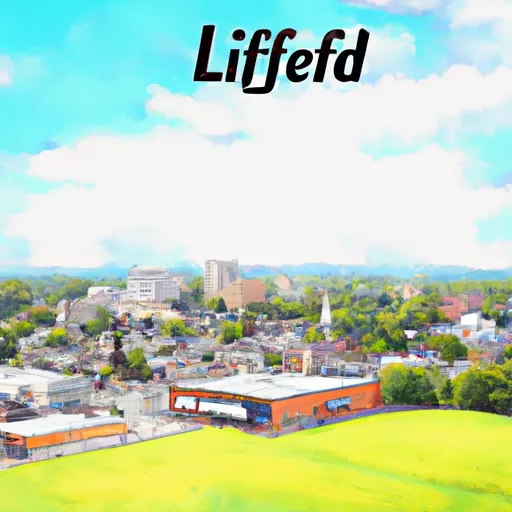-
 Snoflo Premium
Snoflo Premium
Get unlimited access to all our content
With no Ad interruptions! - Start Your Free Trial Login with existing account
Litchfield
Eden Index
Climate
6.3
•
Recreation
2.0
•
Community
3.7
•
Safeguard
4.2/10

Litchfield is a charming city located in central Minnesota, known for its beautiful natural surroundings and ample outdoor recreation opportunities. The region experiences a continental climate, with cold winters and warm summers. Average temperatures range from around 14°F (-10°C) in January to 81°F (27°C) in July.
Litchfield is blessed with numerous lakes and rivers, making it a haven for hydrology enthusiasts. Lake Ripley, one of the largest lakes in the area, offers excellent fishing, boating, and swimming opportunities. Additionally, the scenic Crow River flows through the city, providing a picturesque setting for kayaking, canoeing, and even tubing during the summer months.
Outdoor recreation is a significant part of life in Litchfield. The city boasts several parks and trails, including the Litchfield Nature Center, where visitors can explore hiking trails and observe local wildlife. Prairie Park is another popular destination, offering picnic areas, a playground, and a disc golf course. For those interested in camping, the nearby Lake Koronis Regional Park provides campsites and amenities.
In conclusion, Litchfield, Minnesota, offers a desirable climate, abundant hydrology constituents, and a range of outdoor recreation opportunities that make it an ideal destination for nature lovers and outdoor enthusiasts.
What is the Eden Index?
The Snoflo Eden Index serves as a comprehensive rating system for regions, evaluating their desirability through a holistic assessment of climate health, outdoor recreation opportunities, and natural disaster risk, acknowledging the profound impact of these factors on livability and well-being.
Climate Health Indicator (CHI): 6.3
Litchfield receives approximately
746mm of rain per year,
with humidity levels near 84%
and air temperatures averaging around
7°C.
Litchfield has a plant hardyness factor of
4, meaning
plants and agriculture in this region thrive during a short period during spring and early summer. Most
plants will die off during the colder winter months.
By considering the ideal temperature range, reliable water supplies, clean air, and stable seasonal rain or snowpacks, the Climate Health Indicator (CHI) underscores the significance of a healthy climate as the foundation for quality living.
A healthy climate is paramount for ensuring a high quality of life and livability in a region, fostering both physical well-being and environmental harmony. This can be characterized by ideal temperatures, reliable access to water supplies, clean air, and consistent seasonal rain or snowpacks.
Weather Forecast
Streamflow Conditions
Upper Mississippi-Crow-Rum
Area Rivers
Upper Mississippi-Crow-Rum
Snowpack Depths
Upper Mississippi-Crow-Rum
Reservoir Storage Capacity
Upper Mississippi-Crow-Rum
Groundwater Levels
Recreational Opportunity Index (ROI): 2.0
The Recreational Opportunity Index (ROI) recognizes the value of outdoor recreational options, such as parks, hiking trails, camping sites, and fishing spots, while acknowledging that climate plays a pivotal role in ensuring the comfort and consistency of these experiences.
Access to outdoor recreational opportunities, encompassing activities such as parks, hiking, camping, and fishing, is crucial for overall well-being, and the climate plays a pivotal role in enabling and enhancing these experiences, ensuring that individuals can engage in nature-based activities comfortably and consistently.
Camping Areas
| Campground | Campsites | Reservations | Toilets | Showers | Elevation |
|---|---|---|---|---|---|
| Charles Lindbergh State Park | 40 | 1,129 ft | |||
| DeParcq Woods Military - Camp Ripley | None | 1,145 ft | |||
| Cass Lake | 23 | 1,335 ft | |||
| Stony Point | 44 | 1,336 ft | |||
| Crow Wing State Park | 60 | 1,187 ft | |||
| Winnie | 35 | 1,392 ft | |||
| Camp Cassaway | 10 | 1,306 ft | |||
| Knutson Dam | 14 | 1,307 ft | |||
| Truman City Park | None | 1,104 ft | |||
| Chippewa Loop | 46 | 1,369 ft |
Nearby Fishing
Catastrophe Safeguard Index (CSI):
The Catastrophe Safeguard Index (CSI) recognizes that natural disaster risk, encompassing floods, fires, hurricanes, and tornadoes, can drastically affect safety and the overall appeal of an area.
The level of natural disaster risk in a region significantly affects safety and the overall livability, with climate change amplifying these risks by potentially increasing the frequency and intensity of events like floods, fires, hurricanes, and tornadoes, thereby posing substantial challenges to community resilience and well-being.
Community Resilience Indicator (CRI): 3.7
The Community Resilience Indicator (CRI) recognizes that education, healthcare, and socioeconomics are crucial to the well-being of a region. The CRI acknowledges the profound impact of these elements on residents' overall quality of life. By evaluating educational resources, healthcare accessibility, and economic inclusivity, the index captures the essential aspects that contribute to a thriving community, fostering resident satisfaction, equity, and social cohesion.

